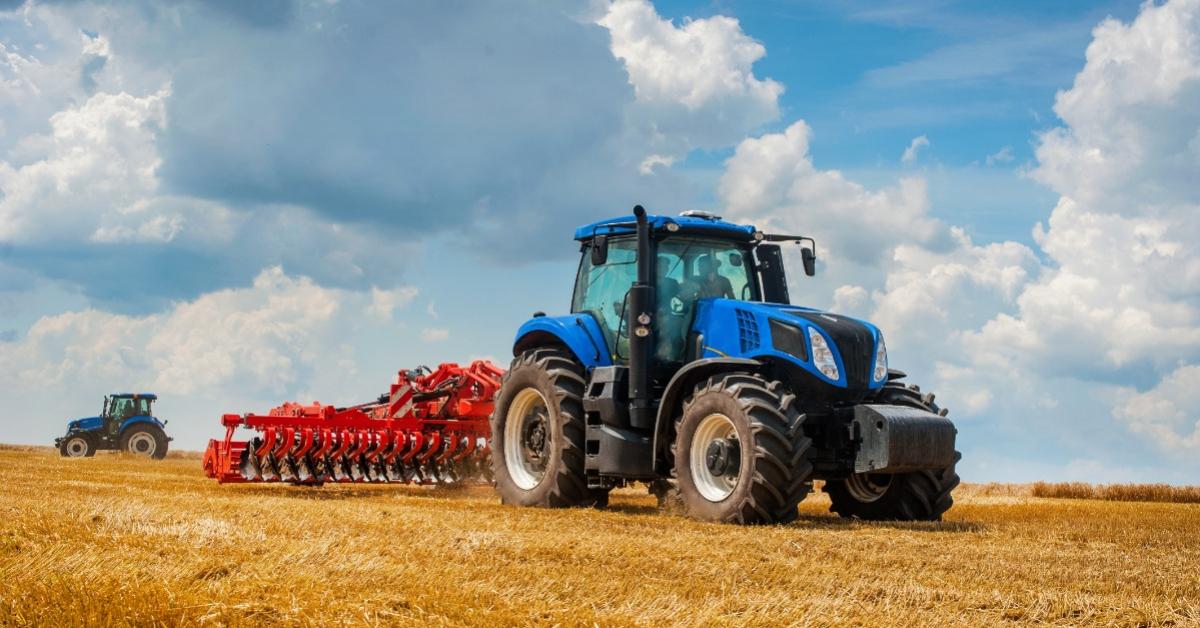
Earlier this year, Our World in Data celebrated the fact we have now passed “peak agricultural land”: over the last few decades, the global land area devoted to food production has declined. While the decline is not large and while the data is uncertain, the fact itself is significant and not in dispute: until recently, agricultural land use rose exponentially to feed the world’s growing population.
This was hailed as a major achievement and as a movement out of the darkness of the past, when man exploited nature and was poor and hungry anyway. It “marks a historic moment in humanity’s relationship to the planet; a crucial step in its protection of the world’s ecosystems,” noted Our World in Data. At HumanProgress, in an article otherwise devoted to the laudable goal of exposing the idiocy of government-mandated organic farming, the authors noted that due to declining land use, “more land can be returned to natural ecosystems, which are far more biodiverse than any farm. Smart agriculture allows nature to rebound.”
Whatever the benefits of such a rebound, I submit that the hosannas are premature, that the real significance of declining land usage has escaped the authors at both HumanProgress and Our World in Data. In reality, this development bespeaks a massive malinvestment of capital: instead of cultivating virgin lands around the world, massive amounts of capital have been poured into an ever more intensive exploitation of existing farmland in developed countries.
The Economics of Land Use
One reason declining agricultural land use is seen as a good thing is the perception that the supply of land is limited in some absolute sense. “Buy land. They aren’t making more of it,” as the old saying goes. Except that they are. To understand this, we need to distinguish between the physical and the economic supply of land. The physical supply of land is limited by the planet’s surface area. The economic supply of land, however, is much more flexible: the only limit is, ultimately, profitability. Some land is supramarginal and some is submarginal, meaning that cultivating it is not worth the expenditure. Where exactly to draw the line between the two is a matter of economic calculation: Will the rent of the land—i.e., the income from a given land area’s contribution to production—be enough to defray the outlays on cultivating it and provide an acceptable return on investment? Over history, more and more land has been brought under the plough—and not only in previously unsettled lands like the Americas. European history is one of expanding land use from the Middle Ages until the twentieth century.
Land, then, is not scarce in a different sense from other economic goods: more of it can and has been produced. In more primitive—i.e., less capitalistic—times, population growth has led to greater land use, as explained in detail by the economist Ester Boserup. However, there is always a choice between tilling the land under cultivation more intensively—i.e., with more capital inputs—or cultivating new lands. Given the comparatively low cost of land and better investment opportunities elsewhere, farmers have historically tended to increase their total acreage rather than develop more capital-intensive techniques. Most famous, perhaps, is the example of the modern Netherlands, a land largely reclaimed from the sea as farmers over the centuries invested in dikes and drainage canals to enlarge the arable lands at their disposal, but the same happened across the civilized world: land reclamation of various kinds was an ongoing activity as countries developed and became more capitalistic.
Malinvestments in Modern Agriculture
After the Second World War, this dynamic changed. One reason for this is an institutional change: there was still plenty of land out there, but it was no longer as straightforward to go out and take possession of it. There are huge swathes of empty land in Russia; many parts of Africa, despite overpopulation worries, are practically devoid of people. But in these countries (and virtually everywhere else) it is no longer possible to settle virgin lands and claim them for yourself—the state forbids that. The Soviets tried their hand at settling some of the wildernesses of Central Asia and Siberia with large collectivized farms in the “Virgin Lands campaign” under Nikita Khrushchev, but this was an abysmal failure.
More important than this change in access to new lands, however, was a change in the economics of agriculture. After World War II, government subsidy programs led farmers to focus on maximizing output. Subsidies were paid out by intervening to set a price far above the world market price of wheat and whatever other products politicians wanted to subsidize. Since the price farmers received no longer fell as quantity supplied rose, farmers across the Western countries invested heavily in intensive cultivation of whatever crops were subsidized. This alone led the world to be swamped by the West’s excess produce and caused world market prices to fall as production outpaced population growth. Another, more hidden cause amplified this tendency toward more intensive cultivation: the rise of the postwar inflationary monetary system.
I have previously described how inflation led to changing production patterns in agriculture. In general, it led to much more capital-intensive cultivation, as the inflationary system favored bank funding for capital investment in agriculture—investments that were also urged on by government officials eager to “modernize” farming according to their own vision of the future. These investments, however, were short term: focused at boosting the physical productivity of farming rather than ensuring its greater long-term value productivity. For instance, more artificial fertilizer becomes available and its use seemingly profitable, leading to a rise in the land’s physical productivity.
As already noted, however, basic food production only needs to keep up with population growth. Any expansion of production above this level is uneconomic, and farmers were dissuaded from it by what is known as Engel’s law: as income increases, the percentage spent on food decreases. Or, from the farmer’s point of view, the demand for food is, above a very basic level, inelastic. Any expansion of production will therefore result in lower revenues—unless population expands and demand therefore rises. Farm investment, therefore, should tend to favor greater value productivity over greater physical productivity—for instance, expanding dairy or beef production rather than cereal production—and capital investment would generally be in other areas of the economy. This, in fact, is what we saw before the twentieth century: other branches of industry expanded much faster than agriculture, and the production of more valuable foodstuffs expanded. This pattern changed with the “modernization” of farming after World War II, driven by subsidies and privileged banking. The physical productivity of land expanded by leaps and bounds due to extremely capital-intensive new techniques. However, rather than progress in any meaningful sense, this is simply the inevitable result of an artificially induced flow of capital to agricultural inputs such as fertilizer, pesticides, and machines. Land use is bound to decline elsewhere when more intensive land use leads to a huge increase in physical productivity and a consequent rise in the supply of cereals.
Land Use Is Good
Finally, land use is not a bad thing. Perhaps some animals will be driven out as the wilderness is cultivated, but other ecological systems will arise connected to farming and other land uses. There may be some truth to worries over modern agriculture and how the aggressive use of artificial fertilizer and pesticides causes the deterioration of the ecology surrounding farming. However, to the extent that this is true, we can see that it is the result of the drive to modernize agriculture since the 1940s—a drive, again, that was wholly artificial, led to much more intensive land use, and resulted from subsidies and credit expansion.
If there are some ecological niches or systems that are completely incompatible with human land use, then there are only two options: either these systems will disappear because no one cares about them or environmentalists will care enough to do something to preserve them. Today this regrettably often takes the form of lobbying governments to use violence against peaceful people, but it can—and sometimes does—take the form of simply buying the land to protect whatever endangered species or ecological niche happens to strike the environmentalists’ fancy. Only if agricultural land use declines due to such voluntary purchases of land for environmental purposes could we meaningfully claim that less agricultural land use is a good thing.







